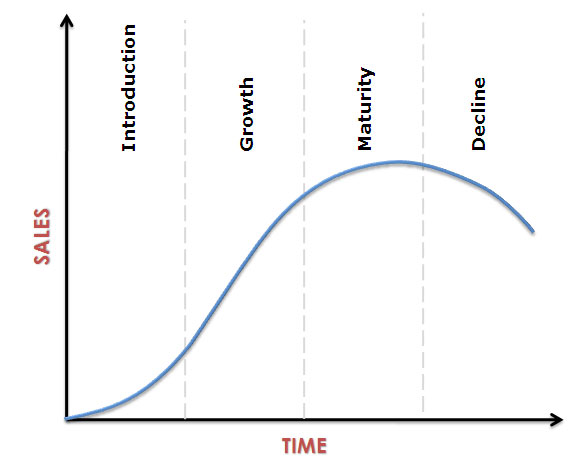Staying Relevant Through Maturity
Can you remember what your IT infrastructure looked like a few decades ago? Was it slower? Easier to manage? Updated less frequently? Hosted in huge, onsite machines?
We all know that the tech landscape has changed dramatically since the end of the 20th century, but stopping to compare where we are to where we were can serve as a great reminder of how different things may be just one year from now.
Nothing is slow in tech anymore. Agility is more than just a buzzword. What happens when we stop to breathe for even a day? Countless updates may have gone live, new applications may have been released, companies may have merged, and our entire IT stack may have become outdated.
The companies supplying our IT tools and applications are doing everything they can to stay relevant. Performance and availability are not just important in companies today, they're essential -- and this adds a layer of pressure for those suppliers to keep up that simply was not there before. For example, enterprise organizations are faced with far higher uptime goals than ever before along with strict SLA compliance. Because of this they are approaching infrastructure and application management in new ways, and the changes affect everyone across the board.
Do it all or best in class?
We've seen every approach to innovation under the sun: some applications and tools that used to be "all-in-one" for their industry are now laser-focused on playing a singular role, while others went in the opposite direction. One interesting trend we are now seeing, however, is the rise of companies diversifying into other areas.
DevOps and Security companies that used to be separate are increasingly overlapping (or, in some cases, buying each other up). Monitoring applications frequently cross over into analytics and alerting and vice versa. Countless companies that have historically been in one silo are choosing to spill over into other silos.
Why is this happening, and why now?
When we had our flashback moment earlier, maybe the thought popped into your mind that before the time when tech was just "slower," it didn't exist at all. These industries -- compared to the vast majority of our economy -- are new. The companies we are discussing here have not been around all that long in the grand scheme of things, so some of them are just now reaching maturity.
Saved by diversification
The Product Life Cycle (PLC) describes the period of time over which an item is developed, brought to market and eventually removed from the market. This can be mapped directly onto most "life cycles" we've seen with companies in these industries: introduction, rapid growth, and now maturity.

Image via NotesDesk.com
And what is an effective way for tech companies to continue growing after reaching the maturity stage?
Diversification.
By diversifying, we are seeing massive attempts to avoid the decline and eventual removal of these applications and tools from the market. Across the board, we see companies entering new markets either by developing new products themselves or buying competitors in those areas.
For example, look at some of the acquisitions that have taken place recently. Splunk (check out their OpsMatters listing here) produces software for searching, monitoring, and analyzing machine-generated big data, via a Web-style interface. In 2018 they acquired VictorOps, whose incident management software aligns log management, monitoring, chat tools, and more, for a single-pane-of-glass into system health.
Splunk, a log management tool, has been helping customers deal with tons of information generated by back-end systems since 2003. Acquiring VictorOps makes a lot of sense, as Splunk now gets a system that alerts an ops team when something needs their attention.
With how much data they are churning out on a daily basis, Splunk has recognized (and acted upon) the need in recent years to use AI and machine learning to help make sense of all the information. They knew they needed to provide automation that, when required, could handle the volume of data that would be too much for humans to keep up with. Acquiring VictorOps helps them take a big step toward that goal.
When announcing the deal, VictorOps CEO Todd Vernon wrote in a blog post that the missions of the two companies mesh nicely. "Upon close, VictorOps will join Splunk's IT Markets group and together will provide on-call technical staff an analytics and AI-driven approach for addressing the incident lifecycle, from monitoring to response to incident management to continuous learning and improvement."
By diversifying their portfolio of offerings with VictorOps, Splunk -- an older company by almost 10 years -- got out ahead of their maturity and added a key system that may have saved their product from becoming obsolete in the near future. Their recognition of the importance of AI and machine learning led them to diversify, and their business offerings will be better for it.
Another key example of diversification we've seen recently was Atlassian's acquisition of Statuspage in July 2016 and Opsgenie in 2018. Atlassian is a provider of collaboration software for teams with products including JIRA, Confluence, Bitbucket, and Stash. The company went public in December 2015, and has long argued that since every company is a software company, that means virtually everyone also now needs a service to keep users informed when something goes wrong.
Statuspage is a service that allows online businesses to keep their users updated by displaying the status of each core component of their service. This acquisition not only allows Atlassian to expand into the status page space, but to do so with "the premier provider of these services," says Jay Simons, Atlassian president.
Arguably an even bigger acquisition than StatusPage was Opsgenie, an incident management platform for operating always-on services. The two companies share a "philosophy to empower teams through open work," and Opsgenie's ability to help DevOps teams to plan for service disruptions and stay in control during incidents has proven to be a valuable asset for Atlassian and their Jira Ops offering.
Diversification's effects are amplified significantly, of course, when the new or additional product being added is high quality, or better yet, the best in class. This can definitely be said for Atlassian's acquisitions over the past few years.
These are just two examples of companies who chose to diversify through acquisition. Other companies, such as Grafana expanding into logging with their new Loki product, or logz.io with their new Security Analytics product, broadened their offerings in-house by developing new products to take to market.
The "in-between"-ers
For OpsMatters, one benefit of not residing in any specific industry is that we can cut across these silos in our analyses of trends in the market. We are not tied to any one type of operational application or tool, so we enjoy taking a look at the bigger picture and discussing the topics we believe to be important and relevant in this space.
In future posts, we'll be taking a deeper look at some of these "in-between" spaces and the companies that operate within them: Helpdesk and Collaboration, Monitoring and Alerting, DevOps and Security, and more. The operational applications and tools space is no longer the evenly distributed industry with clearly defined roles that it once was.
As maturing companies continue to break out of their silos and diversify their offerings, one question remains to be seen: Is it possible to avoid decline altogether?

